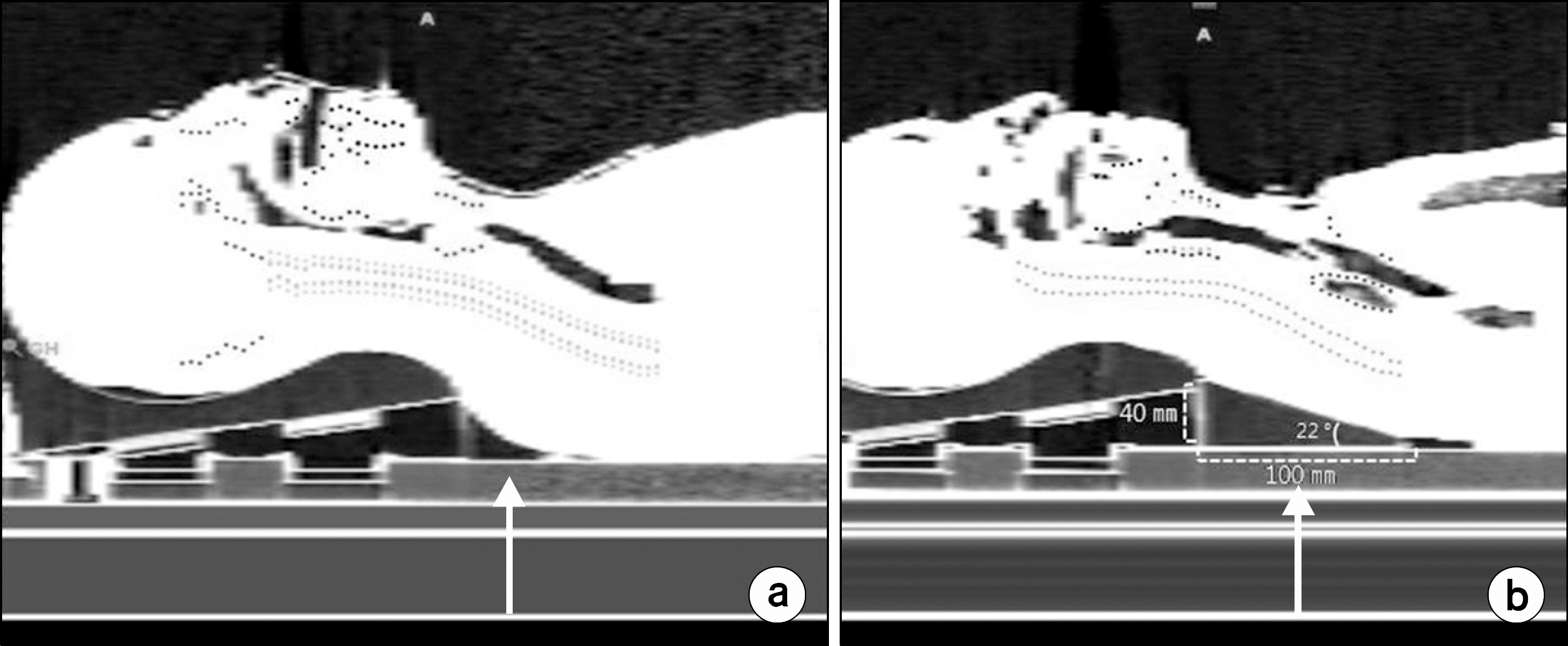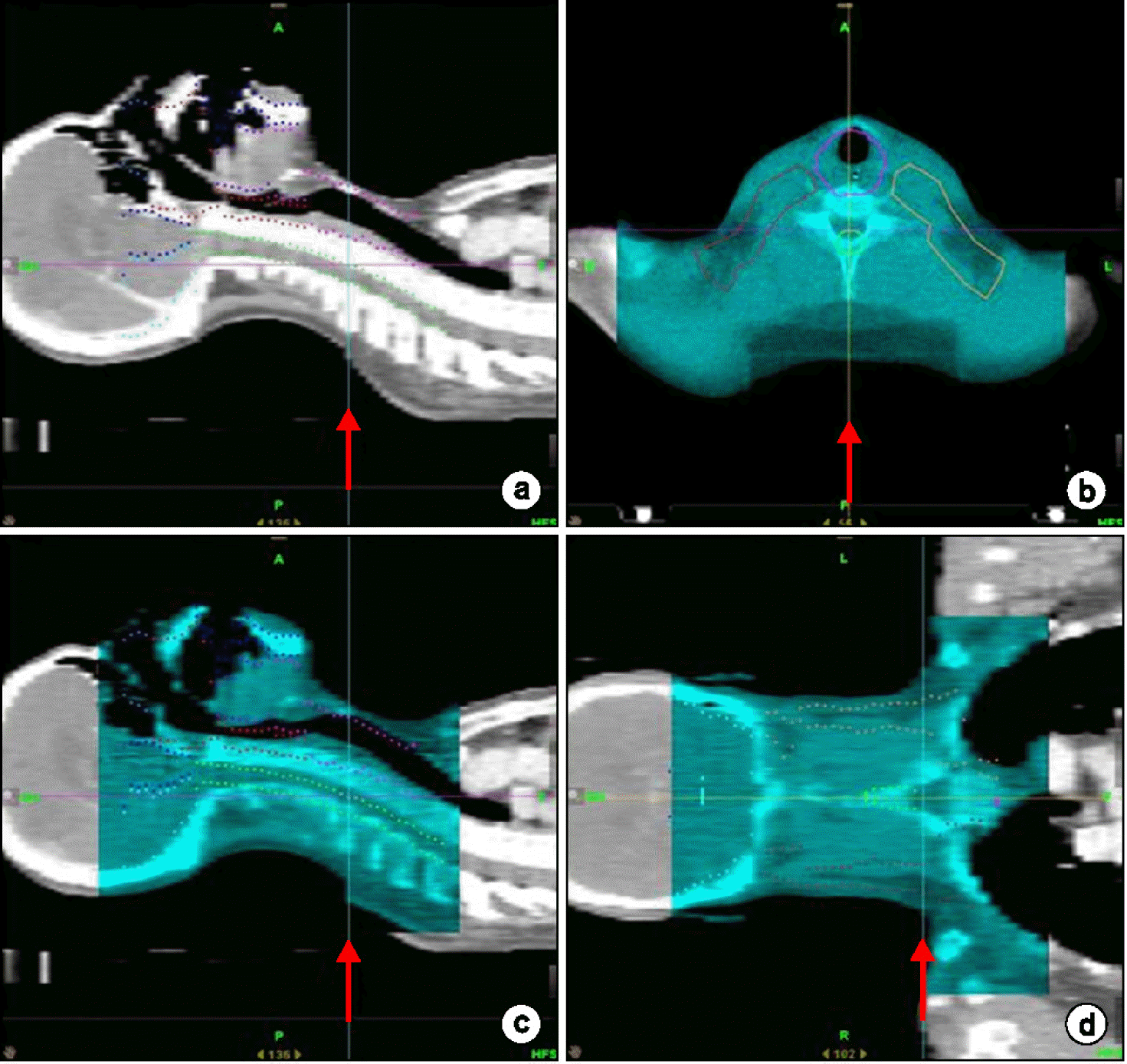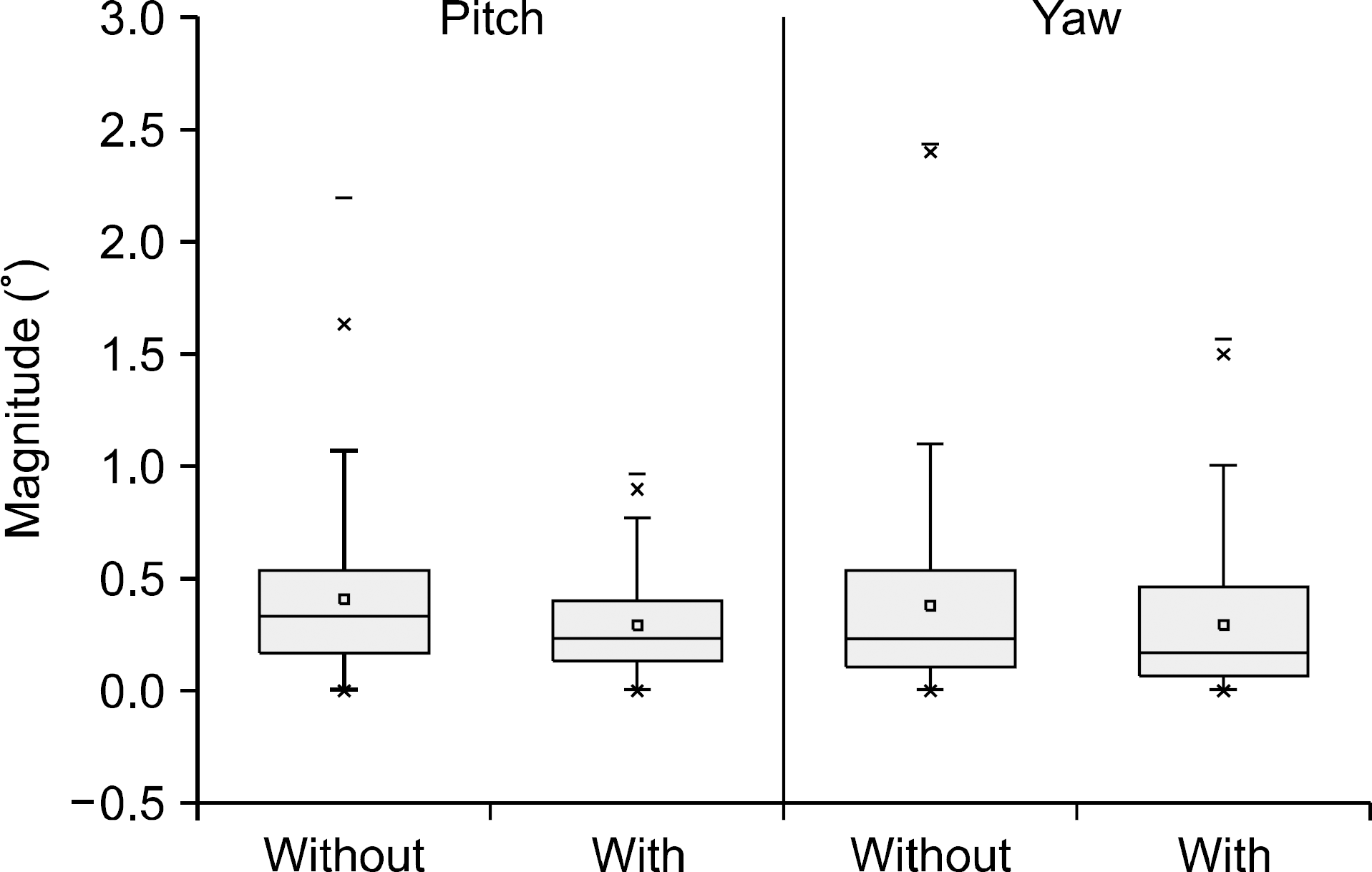Abstract
The aim of this study was to analysis of the pitch and yaw deviations with or without using an aid-pillow for the head and neck cancer on the TomoTherapy. A total of 14 head and neck patients were selected to without-group (n=7) and with-group (n=7). A total of 333 MVCT image sets used to evaluate the translational (lateral, longitudinal and vertical) and rotational adjustments (pitch, roll and yaw) with 153 and 180 MVCT image sets at without- and with-group, respectively. Deviations of without- and with-groups were 0.12o and 0.09o, respectively at pitch. And, deviations without- and with-groups were 0.47o and 0.17o, respectively at yaw. In generally, with-group had reduced than without-group for the pitch and yaw deviations. Therefore, using an aid-pillow, it will able to increase the reproducibility of treatment for the head and neck cancer patients on the TomoTherapy.
Go to : 
References
1. Park S. Cheong KH, Hwang TJ, et al: When should an adaptive plan be considered for head-and-neck cancer patients undergoing tomotherapy treatment. JKPS. 56:897–904. 2010.
2. Duma MN, Kampfer S, Schuster T, et al. Adaptive radiotherapy for soft tissue changes during helical tomotherapy for head and neck cancer. Strahlenther Onkol. 188:243–247. 2012.

3. Loo H. Fairfoul J. Chakrabarti A, et al: Tumour shrinkage and contour change during radiotherapy increase the dose to organs at risk but not the target volumes for head and neck cancer patients treated on the tomotherapy HiArtTM system. Clinical Oncology. 23:40–47. 2011.
4. Smith RP, Bloch P, Harris EE, et al. Analysis of interfraction and intrafraction variation during tangential breast irradiation with an electronic portal imaging device. Int J Radiat Oncol Biol Phys. 62:373–378. 2005.

5. Tricher F, Ennis RD. Prostate localization using transabdominal ultrasound imaging. Int J Radiat Oncol Biol Phys. 56:1225–1233. 2003.
6. Wolfgan AT, Hazim AJ, Lan AN, et al. Helcial Tomotherapy: image guidance and adaptive dose guidance. Front Radiat Ther Oncol. 40:162–178. 2007.
7. Guckenberger M, Meyer J. Vordermark D, et al: Magnitude and clinical relevance of translational and rotational patient setup errors: a cone-beam CT study. Int J Radiat Oncol Biol Phys. 65:934–942. 2006.
8. Kaiser A, Schultheiss TE, Jeffrey YC, et al. Pitch, roll, and yaw variations in patient positioning. Int J Raidat Oncol Biol Phys. 66:949–955. 2006.

9. Hornick DC, Lizenberg DW, Lam KL, et al. A tilt and roll device for automated correction of rotational setup errors. Med Phys. 25:1739–1740. 1998.

10. Lizenberg DW, Balter JM, Hornick DC, et al. A mathematical model for correcting patient setup errors using a tilt and roll device. Med Phys. 26:2586–2588. 1999.
11. Boswell SA, Jeraj R. Ruchala KJ, et al: A novel method to correct for pitch and yaw patient setup errors in helical tomotherapy. Med Phys. 32:1630–1639. 2005.
12. Sharp L, Lewin F, Johansson H, et al. Randomized trial on two types of thermoplastic masks for patient immobilization during radiation therapy for head-and-neck cancer. Int J Radiat Oncol Biol Phys. 61:250–256. 2005.

13. Giske K, Stoiber EM, Schwarz M, et al. Local setup errors in imageguided radiotherapy for head and neck cancer patients immobilized with a custom-made device. Int J Radiat Oncol Biol Phys. 80:582–589. 2011.

14. Zhang L, Garden AS, Lo J, et al. Multiple resions-of-interest analysis of setup uncertainties for head-and-neck cancer radiotherapy. Int J Radiat Oncol Biol Phys. 64:1559–1569. 2006.
15. Meek SL, Harmon JF, Langen KM, et al. Performance characterization of megavoltage computed tomography imaging on a helical tomotherapy unit. Med Phys. 32:2673–2681. 2005.
16. Van Herk M. Errors and margins in radiotherapy. Semi Int Radiat Oncol. 14:52–64. 2004.
Go to : 
 | Fig. 1.The sagittal view of kVCT image (a) with- and (b) without using an aid-pillow. Arrow indicates the location each of without or with aid-pillow (Wedge type; approximately 100 mm×250 mm 40 mm; angle=approximately 22°). |
 | Fig. 2.These 4-spilt figures are (a) kVCT (gray) and (b∼d) MVCT images (cyan) for head and neck patients without using an aid-pillow. Dots are spinal cord (green), mandible (blue), tongue (violet) and another normal tissue as OARs. Arrow (red) indicates the vicinity of the cervical 7th area in MVCT image and, the location curvature area on same level in overall images. Here, the sagittal view of (c) MVCT image with the curvature of neck area through daily MVCT imaging. |
 | Fig. 3.The box plots show that the mean, standard deviation, and minimal/maximal values of pitch and yaw deviations from a total of 14 patients in this study (without aid-pillow and with aid-pillow groups). |
Table 1.
Patient characteristics with and without using an aid-pillow.
Table 2.
Translational and rotational adjustments proposed by Van Herk16) using data from all patients.




 PDF
PDF ePub
ePub Citation
Citation Print
Print


 XML Download
XML Download